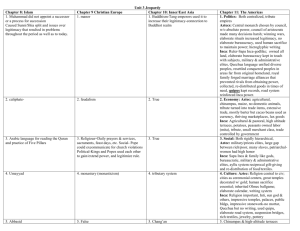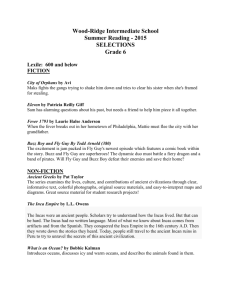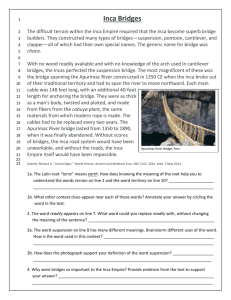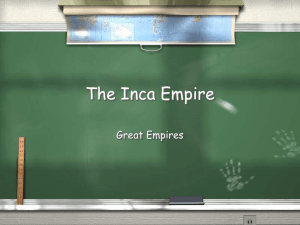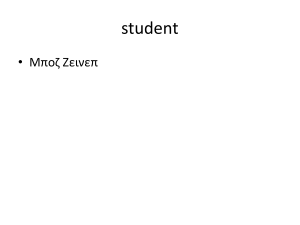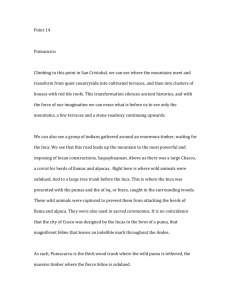Section: Thousands of Inca mummies raised from their graves
advertisement
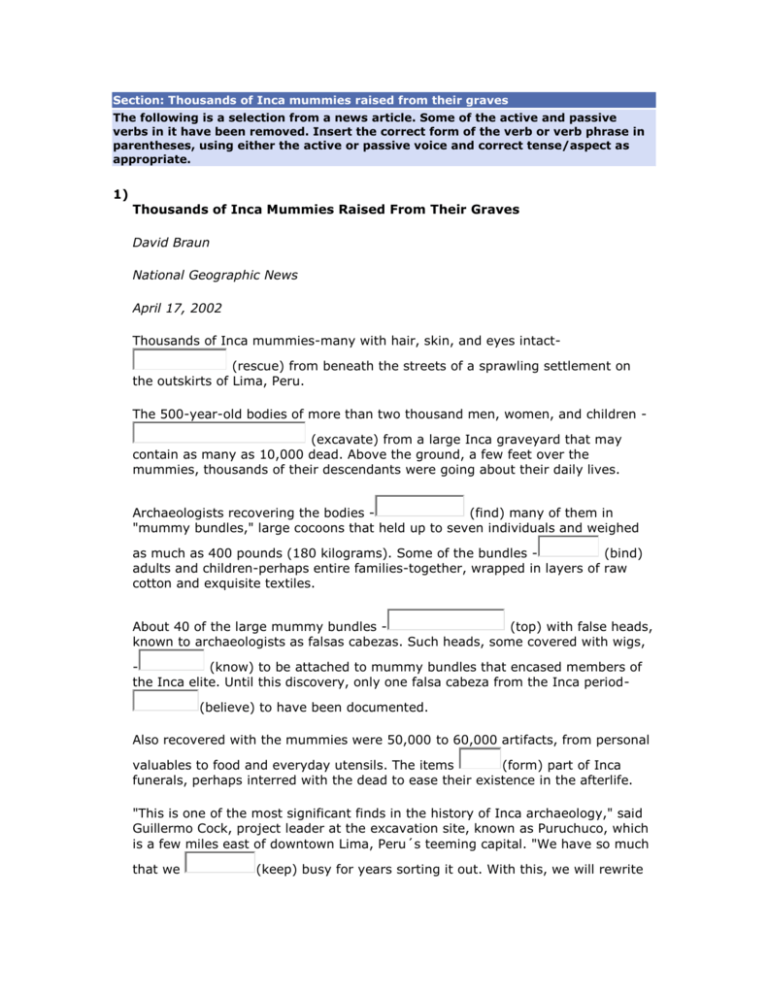
Section: Thousands of Inca mummies raised from their graves
The following is a selection from a news article. Some of the active and passive
verbs in it have been removed. Insert the correct form of the verb or verb phrase in
parentheses, using either the active or passive voice and correct tense/aspect as
appropriate.
1)
Thousands of Inca Mummies Raised From Their Graves
David Braun
National Geographic News
April 17, 2002
Thousands of Inca mummies-many with hair, skin, and eyes intact(rescue) from beneath the streets of a sprawling settlement on
the outskirts of Lima, Peru.
The 500-year-old bodies of more than two thousand men, women, and children (excavate) from a large Inca graveyard that may
contain as many as 10,000 dead. Above the ground, a few feet over the
mummies, thousands of their descendants were going about their daily lives.
Archaeologists recovering the bodies (find) many of them in
"mummy bundles," large cocoons that held up to seven individuals and weighed
as much as 400 pounds (180 kilograms). Some of the bundles (bind)
adults and children-perhaps entire families-together, wrapped in layers of raw
cotton and exquisite textiles.
About 40 of the large mummy bundles (top) with false heads,
known to archaeologists as falsas cabezas. Such heads, some covered with wigs,
(know) to be attached to mummy bundles that encased members of
the Inca elite. Until this discovery, only one falsa cabeza from the Inca period(believe) to have been documented.
Also recovered with the mummies were 50,000 to 60,000 artifacts, from personal
valuables to food and everyday utensils. The items
(form) part of Inca
funerals, perhaps interred with the dead to ease their existence in the afterlife.
"This is one of the most significant finds in the history of Inca archaeology," said
Guillermo Cock, project leader at the excavation site, known as Puruchuco, which
is a few miles east of downtown Lima, Peru´s teeming capital. "We have so much
that we
(keep) busy for years sorting it out. With this, we will rewrite
the history of Inca culture."
The mass excavation of the ancient graves
(fund) by the National
Geographic Society´s Committee for Research and Exploration as an emergency
project. ?/p>
Although a great deal
(write) about the Inca empire, and the way
its expansion impacted provincial communities, the Puruchuco find was some of
the best archaeological evidence uncovered to understand what really happened,
Donnan added.
"These mummy bundles, and the amazing assortment of objects wrapped within
them,
(provide) researchers for years with critical information about
the Inca, and how the Inca were able to create the largest empire that ever
developed in pre-Columbian America." ?/p>
2)
Refugees Built Homes Over Burial Ground
Guerrilla activity in the mountains during the 1980s
(drive) thousands of
refugees to the relative sanctuary of Lima. Hundreds of families erected makeshift
homes on top of the Inca burial ground at Puruchuco. They named the settlement
Tupac Amaru, after the last Inca ruler, who
conquerors in 1572. ?/P>
(execute) by Spanish
Over time it became clear that Tupac Amaru was not going to be a temporary
settlement. Residents began pressing political representatives for title to the
Puruchuco land so that they could build permanent dwellings and install utilities.
They
(raise) a considerable sum of money among themselves to help fund
excavations so that the site
(could examine) professionally, then
shut down permanently as an archaeological area.
It was during that archaeological exploration, in 1999 and 2000, that Cock and
others
(discover) the extent of the treasures under Tupac
Amaru. While some graves
(discover), and even
(loot), no
one had realized thousands more remained hidden. Or that some of the graves
were of the Inca elite, containing priceless artifacts.
"We could not excavate under the houses, so we
(confine) to the
streets and the school playground," Cock said. "What we found was so big梬ith so
many mummies and artifacts梩hat we
(apply) to National Geographic for
emergency funding to take out as much as we could before the bulldozers closed
in and it was all lost to us." ?/P>
3)
Residents Relieved to See Mummies Moved
Cock´s team employed Tupac Amaru residents to help with the digging and
guarding of the excavations. Many of the townspeople were relieved to see the
mummies removed, Cock said. "They are afraid of the dead; they believe they
cause them da馻 [illnesses], which is why they would prefer it if the mummies
(move)."
The mummies
(entomb) in ideal conditions for preservation梩he
extremely dry soil of the coastal Peruvian desert, where no rain may fall for as
long as 20 years. "Preservation conditions are so good, we can determine the sex
of people simply by looking at their genitals," said Cock. "Even the eyes are still
there."
After being well preserved for centuries, the mummies have been deteriorating
rapidly as a result of disturbance from human occupation. Residents of Tupac
Amaru
(scrape) the surface of the ground to build
makeshift dwellings, ripping up mummies in the process. Because the settlement
has no sewerage, residents dump water and wastes in the dirt streets. Some of
the mummies have decomposed as a result of the seepage.
Archaeologists are particularly intrigued by the wide variety of mummies that
have been excavated from the site.
"There is some evidence of a large Inca palace existing near the cemetery," Cock
said. "It appears that a lot of the Inca elite
(bury) here, together with
the common people who would have lived in the nearby hills. We believe we may
have bodies from ten different social stratifications here."
The range of status, age, and gender of the mummies梐s well as the rich textiles
and other artifacts recovered?INPUT TYPE=TEXT NAME="{760A7AD7-EEA5-474DB2B3-CB970DDA449E}FI" SIZE=12 ONCHANGE="refreshChart('{C1CA7DC8B8BE-4BF5-A333-0E2FCAEA7853}','{760A7AD7-EEA5-474D-B2B3CB970DDA449E}','FI')"> (expect) to give archaeologists major insight into Inca
culture and the people themselves. The well-preserved bodies will enable
scientists to determine the general health of the population, genetic relationships,
sources of food, and causes of death. ?/P>
"We are so happy we have this, and not the grave robbers," Cock said. Looting
and smuggling of antiquities is a major problem in Peru and many other
countries, and many sites
(strip) of their contents before
archaeologists have had an opportunity to study the remains. Mummies dug up
by robbers
(often find) strewn on open ground,
denuded of ornamentation and clothing.
Before Cock´s excavations, Tupac Amaru residents who
mummy often would douse it with gasoline and burn it.
(encounter) a
"The people of Tupac Amaru were very supportive of this project. They helped
pay for it, and helped with the excavation and guarding of the open graves," Cock
said.
It
(take) scientists years to unwrap and study the contents of the
Puruchuco mummy bundles. The work is done with tenderness, in part out of
deep respect for the dead. "We do treat and
(deal) with them not only as
people but as ancestors, from whom we all relate in one or another way," Cock
said. "These people are us from a few hundred years ago." Cock estimates that
some 60 percent of the occupants of the Inca burial ground
(not recover).
After the scientists have finished studying the recovered mummies and artifacts,
they
(return) to the Puruchuco area for display in a museum.
Answer 1: have been rescued
were excavated;have been excavated
have found;found
bound;bind
are topped;were topped
were known;are known
is believed
formed
will be kept
was funded
has been written
will provide
Answer 2: drove
was executed
raised
could be examined
discovered;had discovered
had been discovered
looted
were confined
applied
Answer 3: were moved; are moved
were entombed
have scraped;had scraped;scrapped
were buried
are expected
have been stripped
are often found;have often been found
encountered
will take
deal
have not been recovered;were not recovered
will be returned



